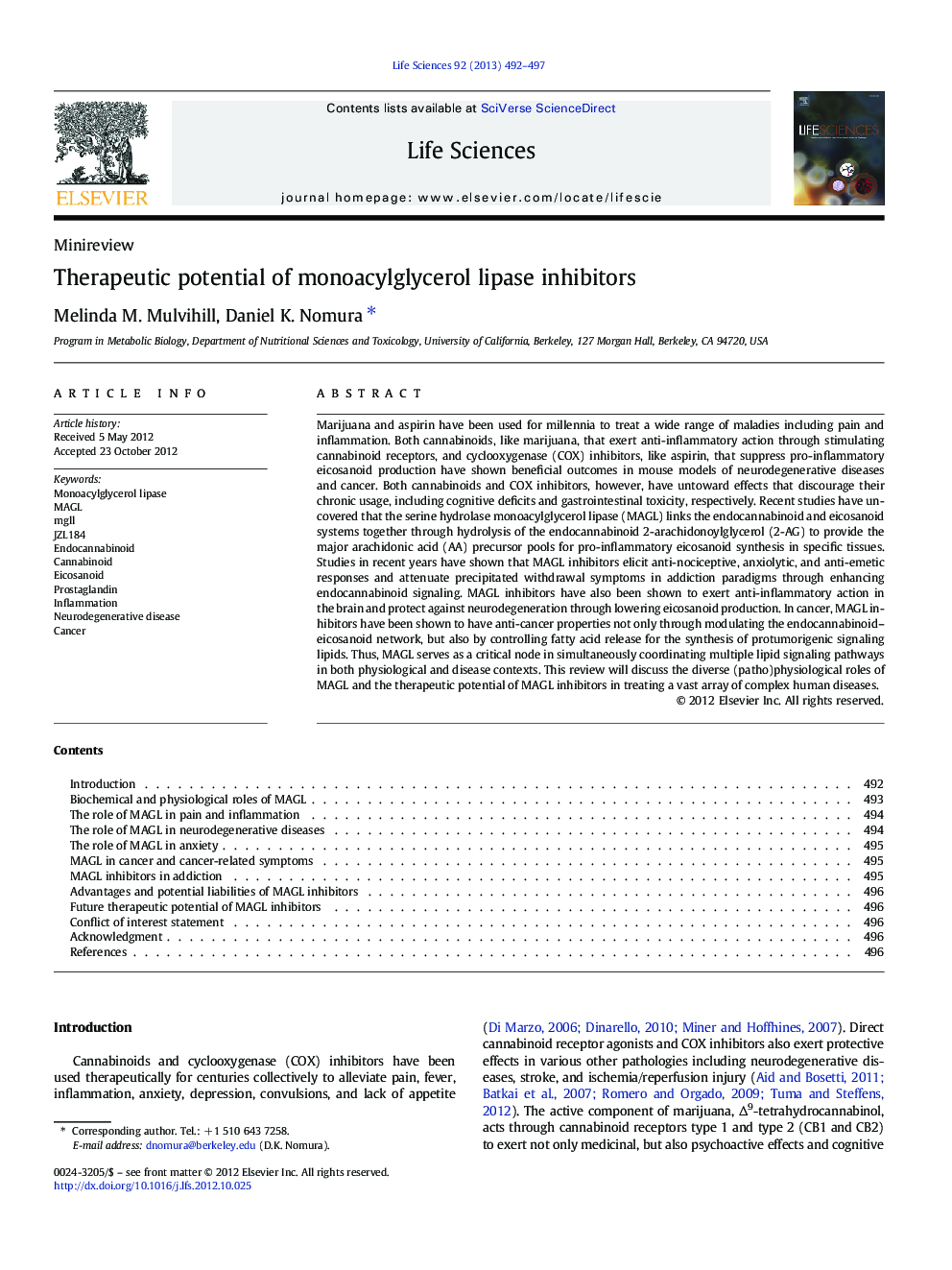| کد مقاله | کد نشریه | سال انتشار | مقاله انگلیسی | نسخه تمام متن |
|---|---|---|---|---|
| 2551660 | 1560633 | 2013 | 6 صفحه PDF | دانلود رایگان |

Marijuana and aspirin have been used for millennia to treat a wide range of maladies including pain and inflammation. Both cannabinoids, like marijuana, that exert anti-inflammatory action through stimulating cannabinoid receptors, and cyclooxygenase (COX) inhibitors, like aspirin, that suppress pro-inflammatory eicosanoid production have shown beneficial outcomes in mouse models of neurodegenerative diseases and cancer. Both cannabinoids and COX inhibitors, however, have untoward effects that discourage their chronic usage, including cognitive deficits and gastrointestinal toxicity, respectively. Recent studies have uncovered that the serine hydrolase monoacylglycerol lipase (MAGL) links the endocannabinoid and eicosanoid systems together through hydrolysis of the endocannabinoid 2-arachidonoylglycerol (2-AG) to provide the major arachidonic acid (AA) precursor pools for pro-inflammatory eicosanoid synthesis in specific tissues. Studies in recent years have shown that MAGL inhibitors elicit anti-nociceptive, anxiolytic, and anti-emetic responses and attenuate precipitated withdrawal symptoms in addiction paradigms through enhancing endocannabinoid signaling. MAGL inhibitors have also been shown to exert anti-inflammatory action in the brain and protect against neurodegeneration through lowering eicosanoid production. In cancer, MAGL inhibitors have been shown to have anti-cancer properties not only through modulating the endocannabinoid–eicosanoid network, but also by controlling fatty acid release for the synthesis of protumorigenic signaling lipids. Thus, MAGL serves as a critical node in simultaneously coordinating multiple lipid signaling pathways in both physiological and disease contexts. This review will discuss the diverse (patho)physiological roles of MAGL and the therapeutic potential of MAGL inhibitors in treating a vast array of complex human diseases.
Journal: Life Sciences - Volume 92, Issues 8–9, 19 March 2013, Pages 492–497